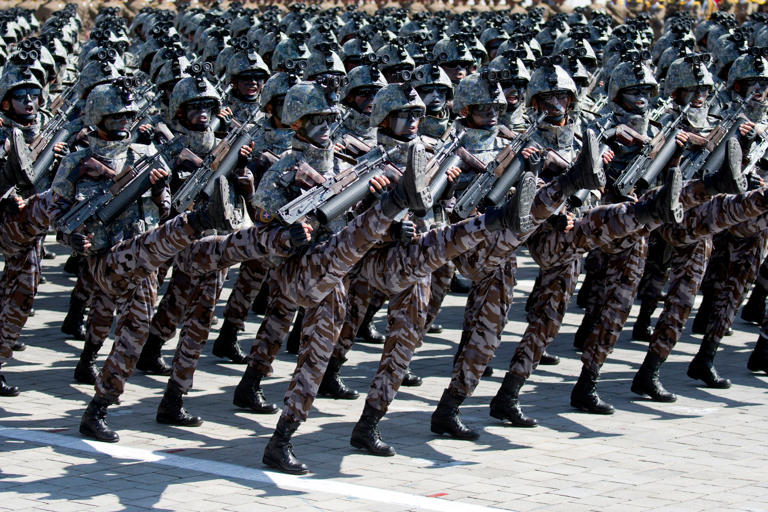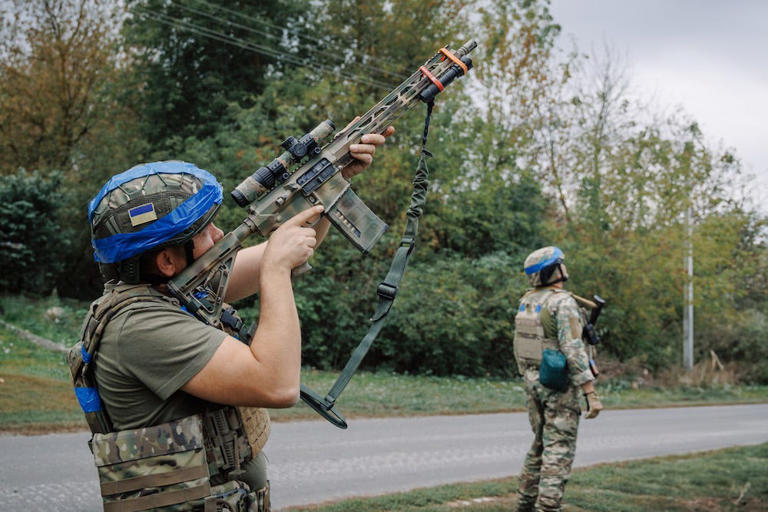RUSSIAN & N.KOREAN FORCES SUFFER STAGGERING LOSSES. Ukrainian commander says North Korean soldiers charged his unit 'like in a World War II movie' during combat
businessinsider.com
Russia's drive in one battlefront has cost it a staggering 1,800 combat vehicles, researcher finds©ANATOLII STEPANOV via Getty Images
- An open-source researcher documented stunning Russian losses in one yearlong assault in Ukraine.
- The losses occurred during Russian offensives to seize Avdiivka and now Pokrovsk.
- Russian forces have yet to make decisive tactical gains in the region.
An open-source researcher who tracks visually confirmed military losses in Ukraine published new findings indicating that Russia has lost more than 1,800 armored vehicles, tanks, and other pieces of heavy equipment in a single yearlong assault, a staggering figure that raises questions about Russia's ability to continue its advance.
In February, Russia seized the town of Avdiivka, a longtime Ukrainian stronghold, after a monthslong campaign that contributed to "some of the highest Russian casualty rates of the war so far," according to British military intelligence.
Moscow's losses — both in equipment and personnel — only continued to grow as it advanced in the western Donetsk region, an onslaught against Ukraine's defended positions that contributed to the heavy toll in September; a US official recently said that month saw the highest Russian casualties in the entire war.
In early October, two key Ukrainian front-line towns, Vuhledar and Hrodivka, fell to Russia during its advance toward Pokrovsk, a strategic city serving as a road and rail hub to supply Ukrainian military outposts.
Despite the heavy equipment losses, Russian forces have yet to make concrete tactical gains in the region, advancing only about 25 miles toward the key Ukrainian city.
A new report by the Institute for the Study of War said the reported losses amounted to at least five divisions' worth of combat vehicles, citing an open-source X account tracking visually confirmed Russian vehicle and equipment losses.
Russian forces have also lost rockets, antiaircraft systems, and drones in its offensive along the eastern front. This is a breakdown of the heavy losses that could jeopardize Russia's ability to expand its battlefield gains.

North Korean soldiers march during a parade in Pyongyang in September 2018. AP Photo/Ng Han Guan, File© AP Photo/Ng Han Guan, File
- Ukrainian forces have fought against North Korean troops in Russia's Kursk region.
- A Ukrainian commander described to BI what it was like to face them in combat.
- He said the North Koreans would charge forward like something out of a movie and were "cannon fodder."
North Korean soldiers who fought in Russia lacked sufficient training for the war in which they were thrown into and were treated by the Russians as "cannon fodder," a Ukrainian commander who went into battle against them told Business Insider.

a1solarstore.com
Canadian Solar 450W Solar Panel 108 Cells Black CS6.1-54TM-450 Clearance
Ad
Konoval Ihor Ihorovych, commander of the reserve group of the 4th Company of the 33rd Assault Regiment, said North Korean behavior in battle was at times confusing and reminiscent of past wars.
Around 11,000 North Korean troops were deployed to Russia's western Kursk region last fall to help Moscow repel enemy forces and recapture territory that Ukraine had seized after it launched a stunning invasion there in August.
Ihorovych, call sign Sahara, joined an operation in early January to take Makhnovka, a settlement in Kursk. The goal was to secure key positions and wait for reinforcements to arrive.

A Ukrainian soldier looks through the scope of a rifle on September 11 in the Kursk region. Oleg Palchyk/Global Images Ukraine via Getty Images© Oleg Palchyk/Global Images Ukraine via Getty Images
He recalled how, at one point, his soldiers came across North Korean troops who were inexplicably running back and forth between buildings while getting pounded by artillery fire around 500 meters away from the Ukrainians.
Ihorovych said he wasn't sure why the North Koreans were running. He speculated that they either didn't know what to do or that there was no commander on the ground with them. Even Ukrainian soldiers in an adjacent unit were surprised by their strange behavior.
The war in Ukraine is a very different kind of conflict compared to what North Korean forces have trained for, and they are suspected to have received only limited training from the Russians.
"In combat, they would just charge forward from the tree line, like in a World War II movie," Ihorovych recalled. Assaults during the Second World War were often high casualty. He said his troops killed a number of North Korean soldiers they saw running from their positions.
Ihorovych said his unit completed their operation without taking any losses, adding that the North Koreans are "cannon fodder."
His description of their battle style falls in line with an assessment from the Biden administration, which said at the end of December that the North Koreans were using human wave tactics that weren't very effective.

Russian President Vladimir Putin and North Korean leader Kim Jong Un exchange documents during a signing ceremony of a new partnership in Pyongyang on June 19. Kristina Kormilitsyna, Sputnik, Kremlin
A White House spokesperson said at the time that Russian and North Korean military leaders viewed the troops as "expendable" and were sending them on "hopeless assaults" against Ukrainian defenses. Prior to their deployment to Russia, Pyongyang's military had not experienced major combat operations in decades.
The Pentagon and Ukraine's military leadership have described the North Koreans as well-disciplined, competent, and capable soldiers skilled in combat but who are new to modern warfare and unprepared for its challenges.
According to new Western intelligence assessments, Pyongyang is taking heavy losses — around 4,000 troops are estimated to have been killed or wounded fighting in Russia. Britain's defense ministry said last month that the high rate of North Korean losses in such a short period of time is negatively affecting their ability to conduct combat operations in Kursk.
Conflict analysts at the Institute for the Study of War think tank warned in mid-January that if this trend continues, Pyongyang could lose all the troops it deployed in just a matter of weeks. North Korean forces, notably, haven't been seen on the front lines in weeks, fueling speculation they were pulled back amid the heavy losses.
Russia and North Korea have strengthened their defense ties during the Ukraine war and signed a pact over the summer that pledged military assistance if one country is attacked. In addition to soldiers, Pyongyang has also sent Moscow artillery shells and missiles. |




